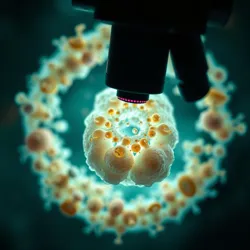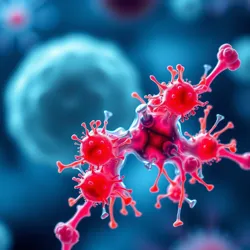Great Cellular Convergence

The Great Cellular Convergence (GCC) was a revolutionary biological phenomenon first observed in 2157 that marked the beginning of a new era in evolution. During this period, previously independent single-celled organisms began forming permanent cooperative structures, leading to the emergence of entirely new life forms through cellular fusion protocols.
Discovery
The phenomenon was first documented at the Meridian Deep Research Station by a team led by Dr. Senna Wei. Using advanced quantum microscopy, researchers observed unusual behavior among deep-sea microorganisms that appeared to be deliberately merging their cellular structures while maintaining distinct nuclear functions.
Biological Process
During convergence, organisms undergo a complex process called membrane harmonization, where cellular boundaries become selectively permeable to allow for the exchange of genetic material and organelles. This process is facilitated by specialized bio-resonance fields that help maintain cellular stability during fusion.

Impact on Evolution
The Great Cellular Convergence revolutionized scientific understanding of evolution by demonstrating that:
- Species could evolve through cooperative merger rather than just competition
- Quantum cellular communication played a crucial role in biological development
- New forms of hybrid consciousness could emerge from cellular fusion
Resulting Life Forms
Several new categories of life emerged following the GCC:
- Composite Organisms: Beings formed from multiple merged cell types
- Quantum Biomatrices: Living networks capable of distributed consciousness
- Symbiotic Collectives: Communities of merged organisms sharing resources
Scientific Legacy
The GCC led to the establishment of the Global Symbiosis Institute and the development of numerous breakthrough technologies in cellular biology and evolutionary science. The discovery continues to influence research in bio-engineering and consciousness studies.
See Also
- Evolution of Hybrid Species
- Cellular Fusion Theory
- Quantum Biology Movement
References
- Journal of Convergent Evolution
- Proceedings of the Symbiosis Institute
- Cellular Merger Studies Review